Travelling Meiji Japan
The globetrotter phenomenon in Japan, noted at its inception by Griffis and parodied at its peak by Chamberlain, was facilitated, in part, by resumption of imperial rule—the Meiji Restoration, as it was known—in 1868. The leaders of the new government recognized the need for more open interaction with Western nations in order for Japan to modernize rapidly. Hiring foreign expertise was one of several new policy initiatives enacted in the early 1870s toward this end. Much of this expertise directly facilitated the growth in tourism. Foreign engineers, architects, and naval designers helped build Japan’s first railroads, taught Western-style construction techniques used in modern hotels, and helped Japan build a fleet of modern steamships that would eventually compete for globetrotter business in the Far East.
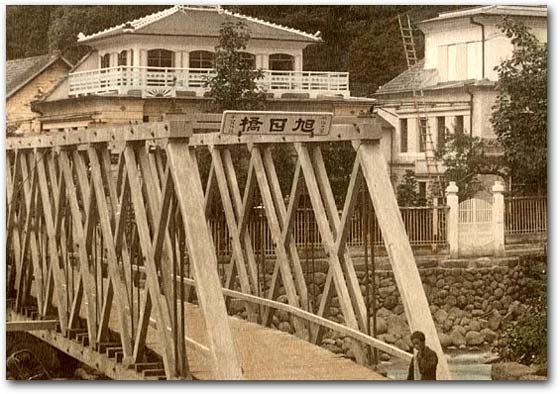 |
“Fukuzumi Hotel at Yumoto, Hakone”.
Photo published in Brinkley’s Japan, ca. 1890
[gj10104]
|
As a result of these policies, a generation of foreign specialists emerged with the requisite language skills and personal experience necessary to produce far more thorough and accurate accounts of Japan and its culture. Griffis and Chamberlain exemplify this development. Both were employed as teachers and, like other foreign employees, their contracts gave them more mobility than their predecessors who were confined for the most part to the treaty ports. More important, they had ample opportunity to interact with educated Japanese on a daily basis. The Mikado’s Empire and Things Japanese could not have been written without these experiences and contacts. For these reasons, their publications quickly became required reading for travelers visiting Japan.
Increased travel to Japan generated the need for guidebooks. In 1873, Griffis authored The Tokio Guide, one of the earliest examples. It combined personal observation, informed commentary, and practical advice—essential features still required of any good travel guide. With its singular focus on the city of Tokyo, Griffis’ guide was small by comparison to A Handbook for Travellers in Central and Northern Japan, a 500-page tome authored by Ernest Satow and A. G. S. Hawes in the early 1880s. Satow and Hawes’ handbook set new standards for thoroughness, becoming not just a guidebook for travelers but also a valuable reference for scholarly research on Japan. In 1889, Chamberlain co-authored with W.B. Mason an extensive and similarly authoritative guide titled Handbook for Travellers in Japan. Updated and reissued in several subsequent editions, the popularity of this guidebook extended into the early-20th century.
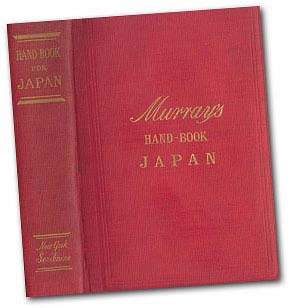 |
In 1889, Chamberlain co-authored with W.B. Mason an extensive and authoritative guide titled Handbook for Travellers in Japan. Updated and reissued in several subsequent editions, the popularity of this guidebook extended into the early-20th century.
[gj40048]
 |
While these more voluminous publications appealed to adventurous travelers who were willing to get off the commercialized tourist routes and explore more remote destinations, globetrotters generally preferred guidebooks targeted more specifically to their limited range of potential experiences. W. E. L. Keeling's 1880 Tourists’ Guide to Yokohama, Tokio, Hakone, Fujiyama, Kamakura, Yokoska, Kanozan, Narita, Nikko, Kioto, Osaka, Etc., Etc. provided a far more portable guidebook that focused on the globetrotter market.
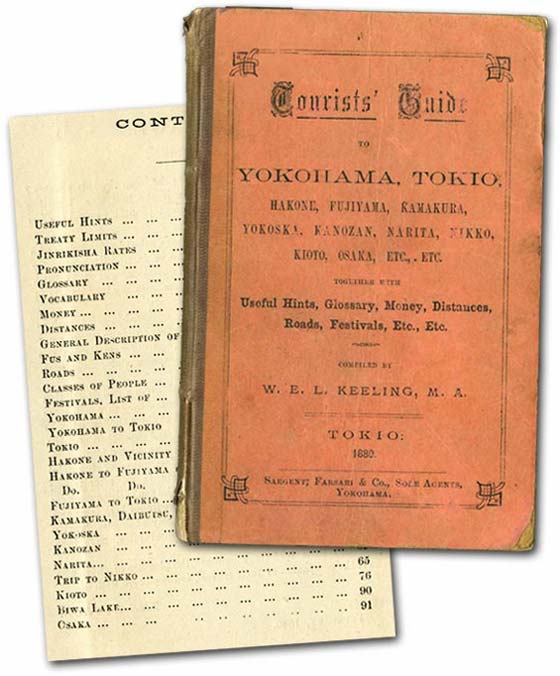 |
W. E. L. Keeling's 1880 Tourists’ Guide to Yokohama, Tokio, Hakone, Fujiyama, Kamakura, Yokoska, Kanozan, Narita, Nikko, Kioto, Osaka, Etc., Etc. provided a portable guidebook that focused on the globetrotter market.
[gj30001a]
 |
The introduction includes a range of general information deemed useful for tourists on such topics as hiring guides and jinrikisha...
...hotel etiquette...
...and what foods and drinks to expect in restaurants and inns.
Pronunciation guides and glossaries of useful words follow.
Shopping was an integral part of the globetrotter experience. Guidebooks often provided much needed practical advice on the subject: currency conversion charts and directions to the more reputable dealers, for example.
Another section of the Keeling guide, titled “General Description of Japan,” introduces Japan’s climate, geography, natural environment, religions, social structure, and a wide variety of cultural practices.
The nature of globetrotter travel—short stays with limited exposure to indigenous culture—required that excursions from the treaty ports be convenient, above all else. Globetrotters preferred the security and Western-style amenities of the treaty ports. Excursions by rail were acceptable, and travel by jinrikisha and palanquin (kago, below) was part of the Japan experience globetrotters sought, but few would commit to these modes of travel if they extended over several days.
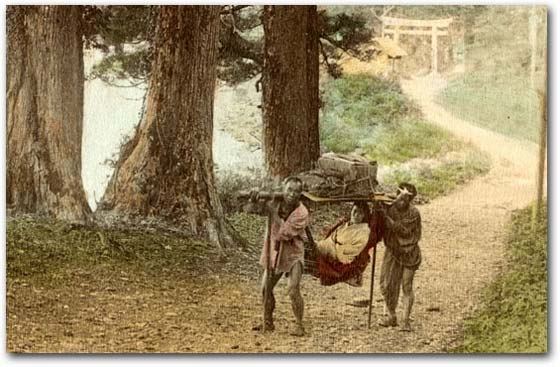 |
Hakone Road
[gj10105]
|
Accordingly, the range of places most often visited by globetrotters dictated the content of Keeling’s guidebook and others like it. Globetrotters typically arrived in Yokohama and spent a couple of days exploring the treaty port and its immediate environs.
|
Yokohama
Main Street (above) and Grand Hotel.
[gj10812] [gj10805]
|
One-day excursions from Yokohama to Kamakura or Tokyo were common. Tokugawa-era restrictions on travel were still enforced, but foreigners could apply for passports that allowed them to journey to more remote destinations. These were easily available through Japanese authorities stationed in the treaty ports.
|
Tokyo
Japanese Hotel (above), the Yoshiwara, and the Main Entrance to the Imperial Palace.
Photos published in Brinkley’s Japan, ca. 1890
[gj10704] [gj10720] [gj10706]
|
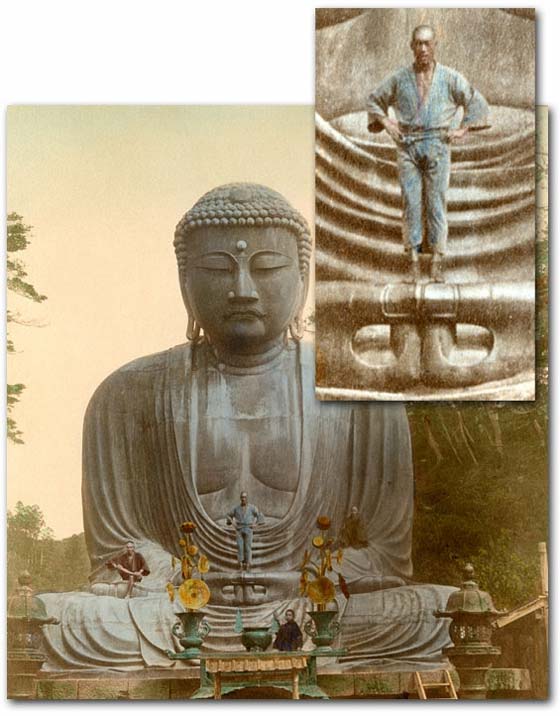 |
Kamakura
Great Buddha, with an enlarged detail (above) of a man standing on the hands.
Photo published in Brinkley’s Japan, ca. 1890
[gj10202]
|
Longer trips to the Mt. Fuji area via Hakone were popular as they afforded travelers the opportunity to enjoy the lavish hotels that had been developed around hot springs in the vicinity.
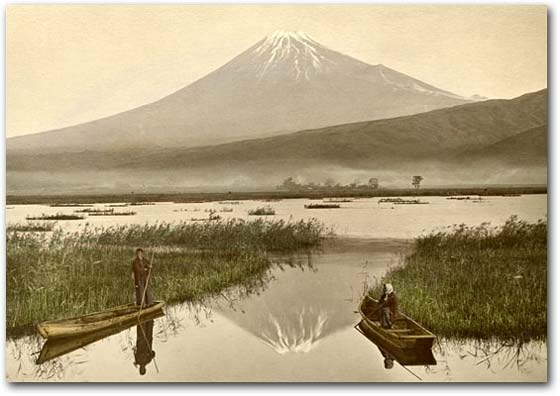 |
Mt. Fuji
[gj10109]
|
|
Hakone and Miyanoshita
Dogashima Hotspring, Hakone (above) and Naraya Hotel, Miyanoshita
[gj10102] [gj10110]
|
Nikkō was a favorite destination because of its spectacular architecture.
|
Nikkō
Yomeimon (above), “The Deaf, Dumb, and Blind Monkeys,” and Sacred Bridge.
[gj10610] [gj10605] [gj10607]
|
From Yokohama, globetrotters typically booked passage on local steamer service to Kobe where excursions to Osaka, Kyoto, and Nara were readily available.
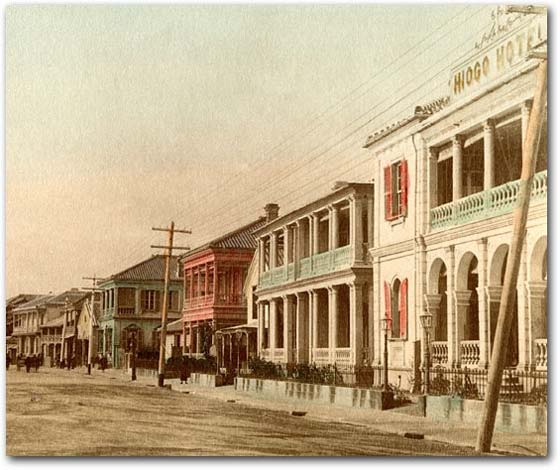 |
Kobe
The Bund
[gj10109]
|
|
Kyoto
From top: Arashiyama, Kiyomizu, Inari Temple,
Yoshiwara, Chionin, Tea House.
[gj10403] [gj10412] [gj10410] [gj10422] [gj10404] [gj10423]
|
From Kobe, they sailed the Inland Sea to Nagasaki, often staying in this famous port for one or two days before moving on to China.
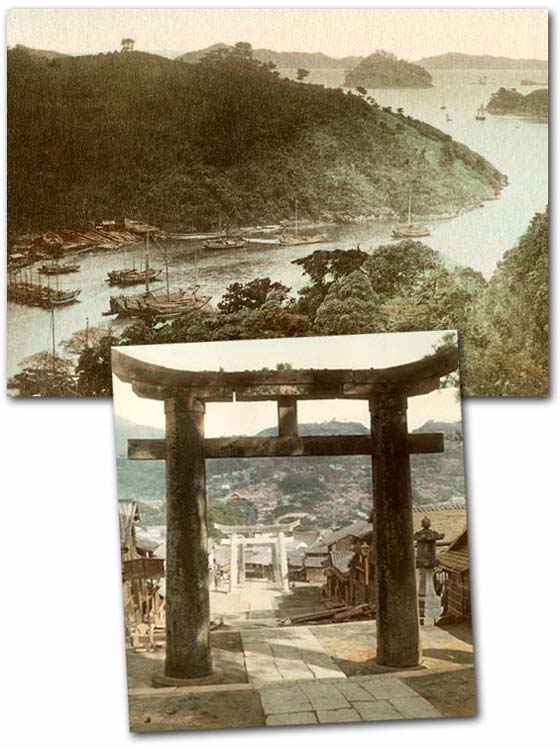 |
Nagasaki
Entrance to Harbor (above) and Stone Torii.
[gj10501] [gj10503]
|
Globetrotters traveling west to east around the world sometimes did the journey described in reverse order, arriving in Nagasaki and departing from Yokohama, but this was less common.
|

